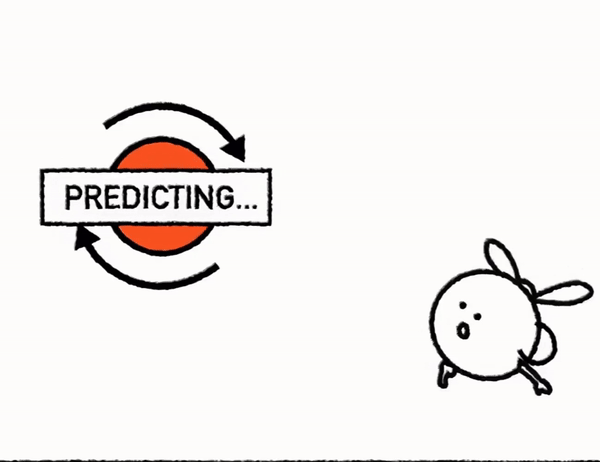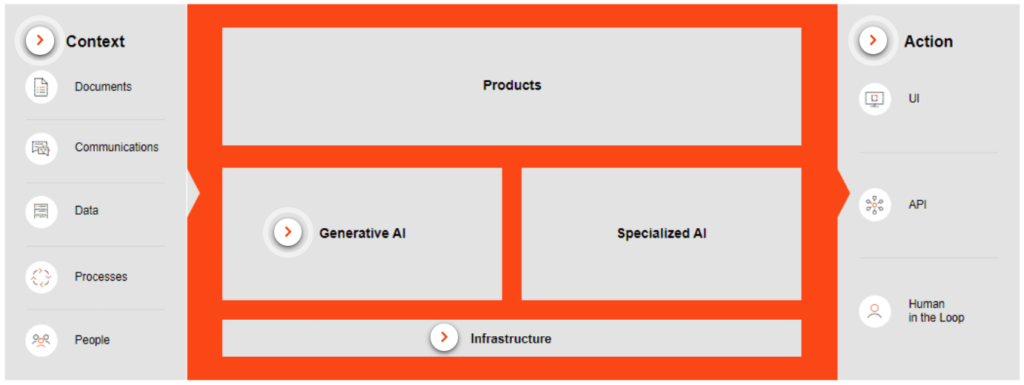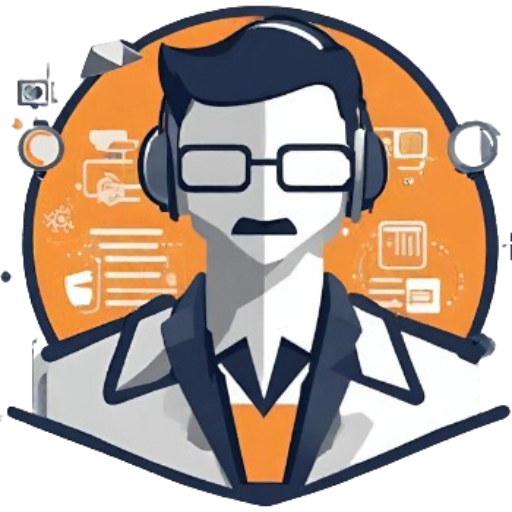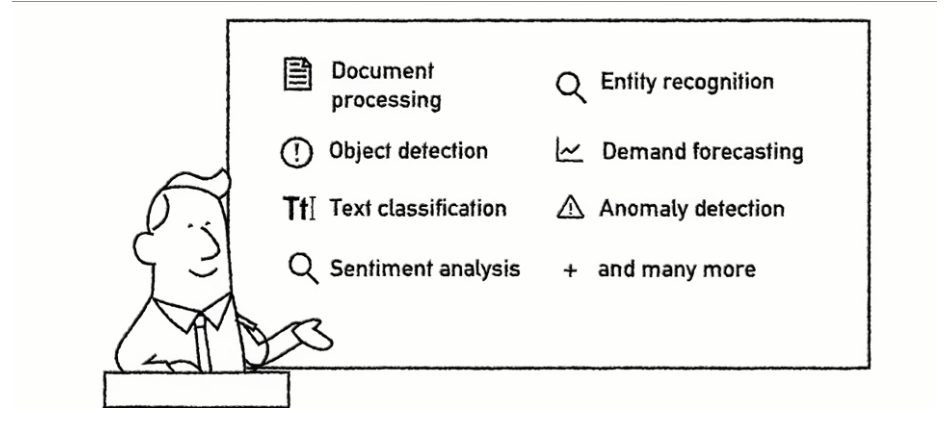In the era where AI dominates corporate strategies, there’s a collective desire to be well-prepared and actively contribute to the AI revolution. While discussions often revolve around Generative AI, my experience has led me to emphasize the significance of Specialized AI. If you’re encountering the term ‘Specialized AI’ for the first time, fear not—it’s simply AI that’s been trained for a specific task, backed by proven results. Wondering how this ties into automation, where Generative AI fits, and who plays a key role in this evolution? This post is your guide to unraveling these insights
Before go in details pls you need to look at below video
Introduction Generative AI vs Specialized AI
In the earlier video, you witnessed the dynamic capabilities of AI in action. However, it’s crucial to discern between two distinct AI types seamlessly integrated in an automation setting.
Generative AI vs Specialized AII serve unique purposes, contributing to various contexts like document processing, communication, data management, and process optimization.
SPECIALIZED AI
Specialized AI is meticulously crafted to excel in specific tasks or domains, ensuring precision and accuracy. However, unlike humans, it lacks the broad cognitive abilities to seamlessly adapt to tasks beyond its training without additional adjustments.
UiPath harnesses the power of Specialized AI to elevate enterprise automation, particularly in tasks involving documents, screens, and processes. An illustrative example is invoice extraction, where UiPath has developed specialized ML models. These models excel in identifying and extracting data from invoices across diverse countries, a result of years of meticulous refinement for this specific purpose.

GENERATIVE AI
Generative AI stands as a category of artificial intelligence capable of generating new content—be it text, images, or music—by learning patterns derived from existing data.
Its applications in the business realm are diverse, spanning content creation (e.g., devising marketing campaign ideas, formulating interview questions, crafting email responses), content understanding (e.g., interpreting communication intent), and code comprehension, among others.

UiPath harnesses Large Language Models (LLMs), a specific type of Generative AI trained on vast volumes of text from sources like books, articles, and websites. These models, such as Chat GPT, excel in understanding and producing human-like text, aiding tasks like question answering, essay writing, language translation, and engaging conversation.
It’s essential to recognize that while Generative AI, including LLMs, can perform admirably, it doesn’t truly “understand” content like humans. Instead, it predicts the next word or sequence based on patterns in its training data, lacking genuine comprehension.
Merging two type of AI
UiPath Communications Mining employs a specialized artificial intelligence approach, utilizing a proprietary Large Language Model (LLM) distinguished by its advanced Natural Language Processing (NLP) capabilities. This specialized model is designed to excel in identifying loan applications within incoming emails, extracting contextual meaning, and categorizing them as urgent. Tailored for handling short-form and asynchronous data, this solution epitomizes the characteristics of Specialized AI, optimized for targeted and efficient processing in the specified domain.
UiPath Document Understanding seamlessly integrates both Generative AI and Specialized AI to enhance its capabilities. This dynamic combination is employed to classify attachments effectively and extract pertinent information. The scope of document types extends from structured loan applications and identification cards to unstructured documents like employment letters. This holistic approach ensures a comprehensive and versatile document processing solution.
The automation robots play a crucial role in the loan processing workflow by submitting all extracted information into the system. In instances where there are missing details, a strategic approach is taken. Generative AI is employed to draft emails with the precision needed to request the necessary information. This seamless integration of automation and Generative AI ensures a proactive and efficient response to incomplete data, fostering a streamlined loan processing system.
As a bonus, the incorporation of “natural intelligence” is achieved through the Human-in-the-Loop collaboration model. This strategic involvement of humans serves a dual purpose: ensuring governance and compliance with organizational policies while harmonizing the collaborative efforts of AI and human intelligence. This model enhances the efficiency of processes by leveraging the strengths of both automated solutions and human expertise, emphasizing a holistic approach to intelligent automation.
Facilitating Collaboration: UiPath Platform and Generative AI
Generative AI stands at the forefront of groundbreaking technologies, showcasing its potential not only in addressing critical global challenges but also in assisting individuals, from solving complex issues to aiding students in formulating ideas.
Acknowledging the significance of prompts for context, the UiPath Platform takes a distinctive approach, particularly in enterprise settings. While prompts are commonly accepted as valuable, their limitations become evident, especially in complex business environments.
In response, the UiPath Platform leverages its capabilities to extract relevant data, serving as valuable context for Generative AI. What sets this collaboration apart is the inclusion of actionable elements. In an enterprise environment, the UiPath Platform not only provides context to Generative AI but also equips it with the means to take concrete actions. This integration ensures a robust and efficient synergy between the UiPath Platform and Generative AI, emphasizing a practical and impactful collaboration.
How the UiPath Platform works with Gen AI
Generative AI stands at the forefront of technological promise, showcasing its transformative potential in addressing some of humanity’s most complex challenges. Its impact spans from solving global issues to aiding students in refining their ideas and perspectives.

Recognizing the importance of prompts in providing context for meaningful interactions is crucial. However, in the dynamic enterprise setting, relying solely on prompts may not be optimal.
Enter the UiPath Platform – a key player introducing a nuanced strategy. In the enterprise context, it surpasses conventional prompts by skillfully extracting relevant data, enriching Generative AI with comprehensive context. This collaboration stands out for the platform’s unique ability to provide not just context but actionable elements.
This symbiotic relationship between UiPath and Generative AI opens new possibilities where data-driven context meets actionable intelligence. It underscores UiPath’s commitment to optimizing Generative AI’s efficiency in enterprise settings, transcending traditional boundaries.
A closer look at UiPath Specialized AI Product
In essence, Specialized AI, distinct from Generalized AI and many mainstream Generative AI models, is tailored for specific tasks rather than broad topics. Within the UiPath Platform, Specialized AI excels in:
- Document Understanding: UiPath’s expertise in intelligent document processing, leveraging machine learning for nearly four years.
- Machine Learning Deployment: Utilizing machine learning models to enhance automation processes for speed and precision.
- Communications Mining: Processing unstructured communication data using a proprietary Large Language Model (LLM) with advanced Natural Language Processing (NLP) capabilities.
Specialized AI Professional
Prerequisites
- 6+ months of experience with core UiPath automation development (Studio, Robot, Assistant, Orchestrator).
- Automation Developer Associate Certification.
- Knowledge of UiPath RE Reframe work (recommended).
- Programming fundamentals
- Analytical thinking
- AI, ML knowledge (recommended).
Responsibilities
- Key Responsibilities for UiPath Intelligent Document Processing and Communications Mining:
- Utilize UiPath Document Understanding Activities:
- Apply UiPath Document Understanding activities within UiPath Studio for the development of stable and effective automation projects.
- Adhere to Design and Coding Standards:
- Follow established design and coding standards to ensure the creation of intelligent document processing automation that is robust and maintainable.
- Automation Testing and Bug Fixes:
- Conduct thorough automation testing, including unit testing, and address any identified bugs or issues in intelligent document processing automation.
- Participate in Production Deployment:
- Actively participate in the production deployment process and contribute to the monitoring of intelligent document processing automation to ensure its reliability and performance.
- Implement Out-of-the-Box ML Models:
- Employ out-of-the-box Machine Learning (ML) models to construct intelligent document processing automation, or alternatively, build ML models from scratch as needed.
- Manage ML Models in UiPath AI Center:
- Effectively manage Machine Learning (ML) models within UiPath AI Center, ensuring proper organization, version control, and optimization.
- Create or Import Datasets for Communications Mining:
- Develop datasets for UiPath Communications Mining projects through either creation or importation of relevant data.
- Design Taxonomies for Unstructured Communications:
- Design taxonomies of labels within UiPath Communications Mining to effectively process and categorize unstructured communications.
- Train and Refine Communications Mining Models:
- Engage in the training and refinement processes of UiPath Communications Mining models to enhance accuracy and efficiency.
- Maintain Communications Mining Models:
- Undertake regular maintenance activities to ensure the ongoing effectiveness and relevance of UiPath Communications Mining models.
- Utilize Communications Mining Output for Analysis:
- Harness the output from UiPath Communications Mining to perform insightful analysis and derive meaningful communications insights.
- Develop End-to-End Automation Solutions:
- Leverage both UiPath Document Understanding and UiPath Communications Mining to develop comprehensive automation solutions, covering end-to-end processes involving both structured documents and unstructured communications.
FAQ – Generative AI vs Specialized AI
What is the significance of Specialized AI in the context of UiPath?
Specialized AI refers to AI trained for specific tasks, and UiPath employs it for tasks like document understanding, machine learning deployment, and communications mining, optimizing precision and efficiency.
How does Generative AI differ from Specialized AI in the UiPath ecosystem?
Generative AI, exemplified by Large Language Models (LLMs) like Chat GPT, creates new content based on existing data, while Specialized AI is crafted for specific tasks. UiPath integrates both for versatile automation solutions.
What role does Generative AI play in UiPath Communications Mining?
UiPath Communications Mining utilizes a specialized LLM with NLP capabilities, showcasing characteristics of Specialized AI. Generative AI helps draft precise emails for requesting missing information in the loan processing workflow.
How does the UiPath Platform collaborate with Generative AI for enhanced efficiency?
The UiPath Platform extracts relevant data and offers it as context to Generative AI in an enterprise setting. Notably, it goes beyond traditional prompts, providing both context and actionable elements for a robust synergy.
What is the role of the Human-in-the-Loop collaboration model in UiPath’s automation solutions?
The Human-in-the-Loop model ensures governance, compliance, and harmonized collaboration between AI and human intelligence. It enhances efficiency by leveraging both automated solutions and human expertise.
Can you elaborate on the responsibilities of a UiPath Specialized AI Professional?
A UiPath Specialized AI Professional is responsible for utilizing Document Understanding activities, adhering to design and coding standards, participating in automation testing, deploying ML models, managing models in UiPath AI Center, and more.
What are the prerequisites for becoming a UiPath Specialized AI Professional?
Prerequisites include 6+ months of UiPath automation development experience, Automation Developer Associate Certification, knowledge of RE Framework, programming fundamentals, analytical thinking, and recommended AI/ML knowledge.
How does UiPath integrate Generative AI and Specialized AI in Document Understanding?
UiPath Document Understanding seamlessly integrates both Generative AI and Specialized AI to classify attachments effectively and extract pertinent information, offering a comprehensive document processing solution.
What is the strategic approach in the loan processing workflow involving Generative AI and automation robots?
Automation robots submit extracted information into the system, and Generative AI is used to draft precise emails requesting missing details, ensuring a proactive and efficient response to incomplete data.
How does the UiPath Platform contribute to the transformative potential of Generative AI in addressing complex challenges?
The UiPath Platform provides relevant data as context to Generative AI, going beyond traditional prompts in an enterprise setting. This collaboration opens new possibilities where data-driven context meets actionable intelligence.
In the ever-evolving landscape of AI, the intersection of Generative AI and Specialized AI holds immense potential for transforming how businesses operate. While Generative AI showcases its prowess in creativity and problem-solving, Specialized AI excels in precision and efficiency for specific tasks. The integration of these two AI paradigms within the UiPath Platform exemplifies a holistic approach to automation, ensuring adaptability and effectiveness.
As we conclude this exploration, it’s evident that the symbiotic relationship between Generative AI and Specialized AI opens doors to unprecedented possibilities. Whether you’re delving into intelligent document processing or harnessing the power of communication mining, UiPath provides a robust framework that seamlessly incorporates both AI types.
Connect with Us for Expert Consultancy:
If you’re eager to harness the full potential of Generative AI and Specialized AI for your business processes, we invite you to connect with our experts. Our team is ready to provide personalized consultancy, helping you leverage these cutting-edge technologies to enhance efficiency, drive innovation, and achieve your business objectives.
Don’t miss the opportunity to revolutionize your automation journey. Reach out to us today and embark on a transformative path towards intelligent, AI-driven automation.
Pls provide your view on “Introduction Generative AI vs Specialized AI” My Post


